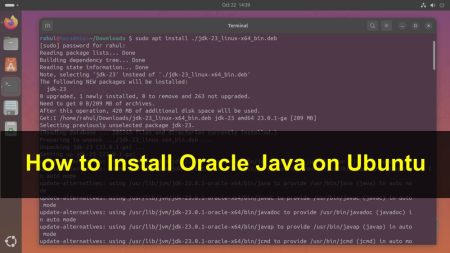In Java, reading data from an InputStream and converting it into a String can be a common requirement when dealing with various input sources such as files, network sockets, or web APIs. In this article, we will explore different approaches to accomplish this task along with code examples.
Method 1: Using BufferedReader and StringBuilder
One of the most straightforward ways to read an InputStream into a String is by utilizing the BufferedReader and StringBuilder classes. The BufferedReader provides efficient reading of characters from an InputStream, while the StringBuilder is used to efficiently build the resulting String.
Here’s an example that demonstrates this approach:
1 2 3 4 5 6 7 8 9 10 11 12 13 14 15 16 17 18 19 20 21 22 23 24 25 26 27 28 | import java.io.BufferedReader; import java.io.IOException; import java.io.InputStream; import java.io.InputStreamReader; public class InputStreamToStringExample { public static String readInputStreamAsString(InputStream inputStream) throws IOException { BufferedReader reader = new BufferedReader(new InputStreamReader(inputStream)); StringBuilder stringBuilder = new StringBuilder(); String line; while ((line = reader.readLine()) != null) { stringBuilder.append(line); } reader.close(); return stringBuilder.toString(); } public static void main(String[] args) { try { InputStream inputStream = ...; // Replace with your input stream String result = readInputStreamAsString(inputStream); System.out.println(result); } catch (IOException e) { e.printStackTrace(); } } } |
In this example, we create a BufferedReader by wrapping the InputStream with an InputStreamReader to convert the byte stream into character stream. We then read the input stream line by line using the readLine() method, appending each line to the StringBuilder. Finally, we close the reader and return the built String using toString().
Method 2: Using Apache Commons IO library
Another popular approach to read an InputStream into a String is by using the Apache Commons IO library, which provides convenient utility methods for handling I/O operations. By leveraging this library, we can simplify the code and reduce the manual handling of I/O operations.
To use the Apache Commons IO library, you need to include the corresponding JAR file in your project’s dependencies. You can download it from the Apache Commons website or include it via a build tool like Maven or Gradle.
Here’s an example that demonstrates reading an InputStream into a String using the Apache Commons IO library:
1 2 3 4 5 6 7 8 9 10 11 12 13 14 15 16 17 18 19 20 21 | import org.apache.commons.io.IOUtils; import java.io.IOException; import java.io.InputStream; public class InputStreamToStringExample { public static String readInputStreamAsString(InputStream inputStream) throws IOException { return IOUtils.toString(inputStream, "UTF-8"); } public static void main(String[] args) { try { InputStream inputStream = ...; // Replace with your input stream String result = readInputStreamAsString(inputStream); System.out.println(result); } catch (IOException e) { e.printStackTrace(); } } } |
In this example, we utilize the IOUtils.toString() method from Apache Commons IO to directly convert the InputStream into a String using the specified character encoding (“UTF-8” in this case). The method handles the underlying I/O operations and closing of the stream automatically.
Method 3: Using Java 9+ InputStream.readAllBytes()
If you’re using Java 9 or a later version, an even simpler way to read an InputStream into a String is by utilizing the InputStream.readAllBytes() method. This method reads all the available bytes from the input stream into a byte array, which can then be easily converted into a String.
Here’s an example that demonstrates this approach:
1 2 3 4 5 6 7 8 9 10 11 12 13 14 15 16 17 18 19 20 21 | import java.io.IOException; import java.io.InputStream; import java.nio.charset.StandardCharsets; public class InputStreamToStringExample { public static String readInputStreamAsString(InputStream inputStream) throws IOException { byte[] bytes = inputStream.readAllBytes(); return new String(bytes, StandardCharsets.UTF_8); } public static void main(String[] args) { try { InputStream inputStream = ...; // Replace with your input stream String result = readInputStreamAsString(inputStream); System.out.println(result); } catch (IOException e) { e.printStackTrace(); } } } |
In this example, we call the `readAllBytes()` method on the InputStream, which returns a byte array containing all the available bytes. We then construct a String from the byte array using the specified character encoding (“UTF-8” in this case) via the String constructor.
Conclusion
Reading an InputStream into a String in Java can be achieved through various approaches. In this article, we discussed three different methods to accomplish this task, each with its own advantages. You can choose the method that best suits your requirements and the version of Java you are using.
Remember to handle exceptions appropriately and close the InputStream after reading to release any associated resources. Reading large input streams into a String may consume a significant amount of memory, so it’s important to consider memory usage and optimize your code accordingly.

